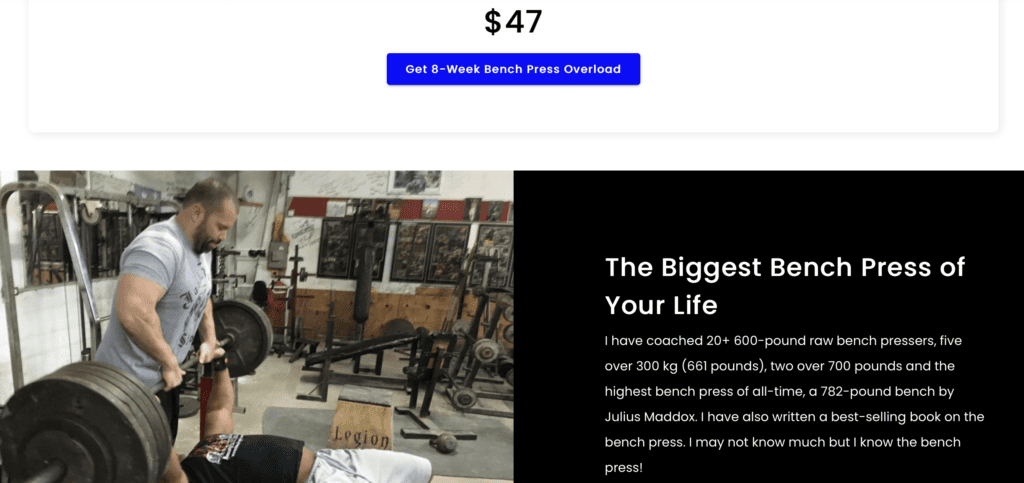Explosive Bench Pressing
by: Josh Bryant

It is impossible to lift a maximum weight with intention of moving it slowly!
Often, I am asked how to build speed in the squat, bench press, or deadlift. My response is redirecting the question back at the person on their intent when lifting the barbell. Dollars to donuts says the response will be a timid, “I just try to get the weight back up.”
Hog wash!!! If you want to dominate the pig iron, you must lose this dominated response.
Field Testing
I am not expecting blind adherence to anything I am saying, I have provided a field test for you to make your decision.
Walk over to a dumbbell rack and slowly pick up a 50-pound dumbbell. Now, snatch that same dumbbell off the rack. Take note of what feels lighter?
Lifting the dumbbell fast makes it feel lighter and gives you a feeling of domination. The same holds true with a heavy barbell.
Kaz’s Wisdom
In a conversation with Bill Kazmaier seven years ago about the bench press, Kaz described what he envisioned before bench pressing, “I see a big explosion going off, blowing things up. The same way I will blow the weight up. I lift it up as fast as possible.” Was Kaz arguably the strongest man of all-time because he found a training program that worked for him and had great genetics? Partially, but that’s only part of the scoop.
I believe what really set Kaz apart was his mindset. When Kaz bench pressed, his INTENTION was to move the weight as explosively as possible.
Al Davis
When I first started training Al Davis (670 competition raw bench press), I kept telling him to make a conscious effort to explode the weight. By the third session, he had it down. The day after Al performed CAT bench presses, Al texted me that his biceps were sore. This is what we are after!
C’mon, sore biceps via explosive bench pressing? Bizarre, no? The modus operandi is by locking the weight out while bench pressing, the triceps are the prime mover and the biceps are the opposing muscle acting to prevent elbow hyperextension.
The biceps serve as OSHA for explosive bench presses, regulating safety as they spare the elbow of forces associated with valgus extension overload of the elbows. The problem is the biceps begin regulating safety way too early and limit force production capabilities. To inhibit this limiting effect, you need to train in a Compensatory Acceleration style.
Bottom line: Sore biceps following bench pressing means you reached a new realm of explosive power.
Movement Intention
Bodybuilders talk about muscle intention, meaning feeling the muscles working that you are targeting. For example, performing a bicep curl, you feel the biceps do the work.
I am going to introduce to youto “movement intention.” This simply means when performing a core barbell movement on the concentric (positive) portion of the rep, you explode as hard as possible.
Make no attempt at selective muscle fiber recruitment; just explode as hard as possible. The ultimate goal is lifting the most weight possible; the only way to do this is simultaneously recruit as many motor units as possible by lifting the weight as explosively as possible! Ten men beat two men in tug of war, and motor units are no different.
Before you get over analytical about what special exercises you need to use to increase a certain lift, make sure you are employing this concept of movement intention. Then, and only then, will you have the knowledge to know what special exercises will be able to help you.
Start bench pressing with movement intention with Josh’s Bench Press Overload Program HERE.

